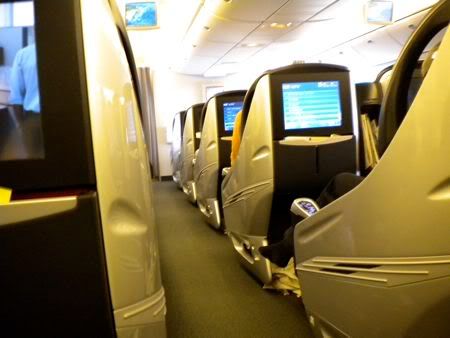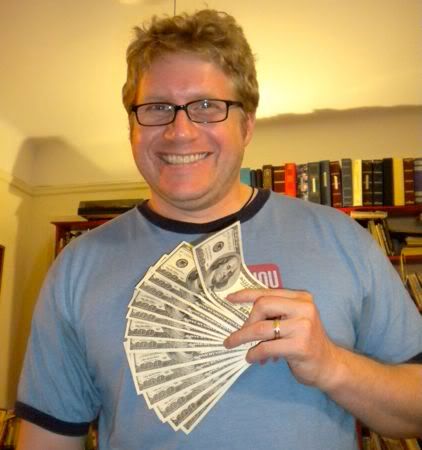My flight to Myanmar was going to take two days, a total of 23 hours flying time, with various stopovers — in Japan and Singapore — extending the traveling time to more than 30 hours. I had never done that much flying in one stretch, and was a little concerned about how I’d get through it — especially since I was expected to hit the ground running in Yangon.
But one perk Mike Bandler told me about right at the beginning was that for any trip longer than 14 total hours, the government automatically set travelers up in business class. Yes, your tax dollars at work! (Still, it’s a better use of them then, say, invading Middle Eastern countries…)
In any case, I didn’t really know what business class meant. Growing up, we had no money to spare. My mom and I didn’t even take vacations, let alone fly anything other than coach. For us, it was always the cheapest way above all — comfort wasn’t an option. My only knowledge of an “upgrade” was that episode of Seinfeld when Jerry flew first class and Elaine flew coach. So I was curious and excited to see what business class was all about.
My first clue was when I checked in and the Japan Airlines gate attendant told me I could wait in the “rounge.” It wasn’t until she repeated herself that I realized she mean the JAL lounge. I headed over there and was greeted by the airport equivalent of a private club! Free Internet, free magazines, free drinks (including the hard stuff), and large, comfy seats. A peaceful, entitled quiet governed the room. Nobody was so uncouth as to talk on their cellphones. Civilized. I was truly getting a taste of how the “other side” lived. (Even so, in the tradition of my grandmother stuffing buffet dinner rolls into her purse, I snagged a couple of free Cokes and some snacks for the long flight ahead.)
The business section of the plane contained about 75 seats, 75% filled with Japanese business travelers, 90% of them men traveling solo. (That’s why it’s called business class!) The seats were like self-contained, automated pods, wide and cushy, with “lumbar support” and the ability to extend almost flat, like a bed. (In a sinister way, they reminded me of the embryonic pods containing the real human bodies from The Matrix.) Each pod had its own TVs and entertainment system, complete with free movies (American and Japanese releases), video games, music, a live view out of the nose of the plane, and more. And each pod came with a complimentary set of slippers; the first thing my fellow travelers did was take off their shoes and don them.
The best thing about the experience, of course, was the service. They really know how to do service in the East. The stewardesses (how they referred to themselves) were so polite, always bowing and smiling, going out of their way to help me. It was like having my own personal geisha! There was something so enticing and soothing about her soft, high-pitched tones; I couldn’t help but develop a little crush on her. I loved how they donned aprons over their uniforms before beginning the food service.
The food was excellent, though I wish I had tried more of the Japanese options. One thing I liked — both in name and flavor — was the “JAL Original Drink, Skytime Yuzu.” It was like a flat celery soda. I also really enjoyed the “Tokyo Curry Lab x. Japanese Airlines,” a savory vegetable curry over rice.
The flight took us practically over the North Pole, as we passed over Inuvik (in Canada’s far Northwest Territories) and Kamchatka (between Alaska and Siberia). In between all the meals and free movies I even got a few hours of sleep before we landed at Narita Airport outside of Tokyo.
As the flight came to a close, the stewardesses went around the cabin thanking each customer for flying with them, along with more smiling and bowing. The guy in the seat next to me was a salaryman just coming back from Sao Paolo, Brazil, by way of New York. As I marveled over the experience, he told me that Japan Airlines was in bankruptcy and was being run by the Japanese government. You never would have known.


